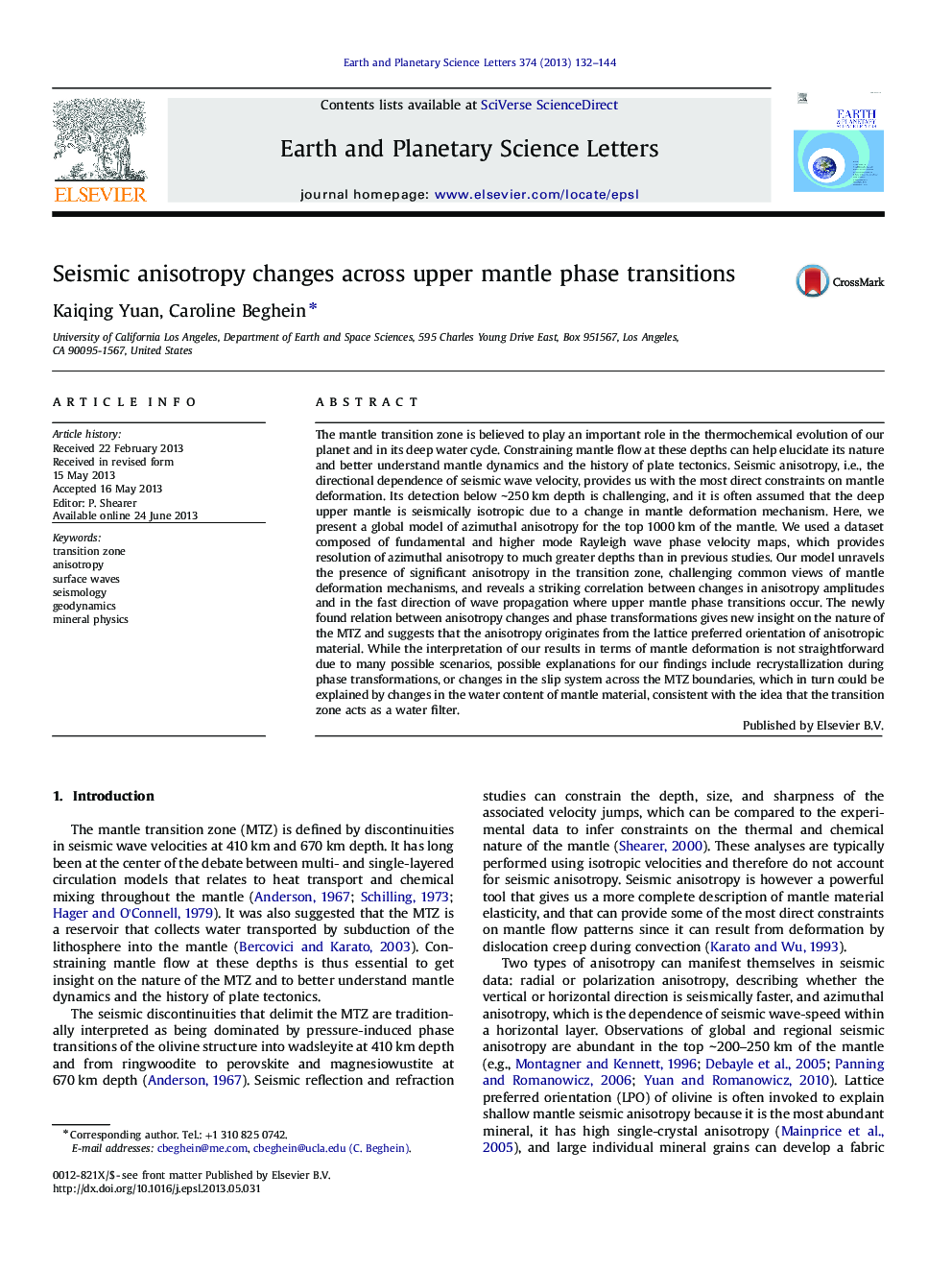| کد مقاله | کد نشریه | سال انتشار | مقاله انگلیسی | نسخه تمام متن |
|---|---|---|---|---|
| 6430142 | 1634781 | 2013 | 13 صفحه PDF | دانلود رایگان |

- We model 3-D azimuthal anisotropy down to the mantle transition zone.
- Minima in anisotropy amplitude correlate with depth changes in fast axis.
- Anisotropy amplitude and fast axis change at transition zone boundaries.
- Low anisotropy amplitudes and changes in fast axis were found at the LAB.
- Changes in azimuthal anisotropy mark the bottom of the asthenosphere.
The mantle transition zone is believed to play an important role in the thermochemical evolution of our planet and in its deep water cycle. Constraining mantle flow at these depths can help elucidate its nature and better understand mantle dynamics and the history of plate tectonics. Seismic anisotropy, i.e., the directional dependence of seismic wave velocity, provides us with the most direct constraints on mantle deformation. Its detection below â¼250km depth is challenging, and it is often assumed that the deep upper mantle is seismically isotropic due to a change in mantle deformation mechanism. Here, we present a global model of azimuthal anisotropy for the top 1000Â km of the mantle. We used a dataset composed of fundamental and higher mode Rayleigh wave phase velocity maps, which provides resolution of azimuthal anisotropy to much greater depths than in previous studies. Our model unravels the presence of significant anisotropy in the transition zone, challenging common views of mantle deformation mechanisms, and reveals a striking correlation between changes in anisotropy amplitudes and in the fast direction of wave propagation where upper mantle phase transitions occur. The newly found relation between anisotropy changes and phase transformations gives new insight on the nature of the MTZ and suggests that the anisotropy originates from the lattice preferred orientation of anisotropic material. While the interpretation of our results in terms of mantle deformation is not straightforward due to many possible scenarios, possible explanations for our findings include recrystallization during phase transformations, or changes in the slip system across the MTZ boundaries, which in turn could be explained by changes in the water content of mantle material, consistent with the idea that the transition zone acts as a water filter.
Journal: Earth and Planetary Science Letters - Volume 374, 15 July 2013, Pages 132-144